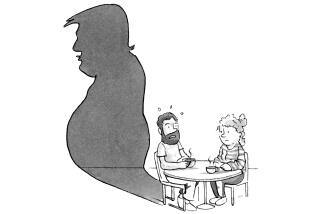Review: A black teen is shot in Kekla Magoon’s ‘How It Went Down’
- Share via
Kekla Magoon’s riveting postmortem account of a tragic shooting is as familiar a scenario in contemporary urban YA fiction as it has been in recent national headlines. “How It Went Down” opens seconds after a white bystander, Jack Franklin, guns down African American teen Tariq Johnson after a confrontation in front of the Underhill neighborhood convenience store. Many witnesses narrate the shooting from their vantage points, including various members of the local 8-5 Kings gang and their affiliates as well as the convenience store owner.
We soon learn that young Tariq was on a grocery errand for his family and was holding a Snickers candy bar in the sleeve of his black hoodie, not a gun. The balance of the tale focuses on how those closest to Tariq pick up the pieces of their shattered lives.
Through Magoon’s deft storytelling — reminiscent of classics in the genre, from Alice Childress’ “A Hero Ain’t Nothin’ But a Sandwich” to the essential “Shooter” by Walter Dean Myers — we become acquainted with members of Tariq’s close-knit family, teens who knew him, and their relatives and neighbors.
Magoon’s choice to center the book on youth voices amplifies not only their sense of loss but also the resonant effects of Tariq’s death on the choices they make in their own lives. For instance, while one friend chooses to distance herself from the gang after watching Tariq take his last breath, another contemplates turning toward the Kings for protection and revenge. The most heartbreaking of all is Tina, Tariq’s younger sister with special needs — but as we learn by the end of the novel, what Tina needed most was Tariq.
Adult characters are more of a mixed bag. Women like Tariq’s mother and grandmother, and the neighborhood elder, Miss Rosalita, are excellently depicted, but we are afforded only tantalizing glimpses of the shooter as well as Junior, a King serving a life sentence, and Steve Connors, the prosperous stepfather of muralist and tagger Will Emzee. I would have loved to have seen more of the chapters devoted to their stories. The character I found most unconvincing was the stereotypical Rev. Alabaster Sloan, a thinly veiled caricature of Al Sharpton. Sloan wrestles with the guilt of exploiting Tariq’s death, the knowledge that his visibility in the case will help his political campaign — and the temptation of Kimberly, a star-struck stylist hired as his local assistant.
Although traditional activists like Sloan are a factor in urban protest culture, the rise in youth activist voices has been the single biggest new development in response to the deaths of Trayvon Martin, Jordan Davis and Mike Brown. There is a dearth of YA activism in YA fiction, and this seems like an opportunity missed.
Perhaps the most brilliant choice that Magoon makes in “How It Went Down” is its outcome. While the novel begins with gunshots that tear reality asunder, it concludes before much is resolved. In the Underhill neighborhood, as in many neighborhoods across the United States, there are no happily ever afters, only the determination to live in spite of the Tariq-shaped holes in everyone’s lives. Magoon’s fifth novel is a stark yet captivating read that is both relevant and necessary.
Thomas is an assistant professor in the Reading/Writing/Literacy Division at the University of Pennsylvania’s Graduate School of Education and is co-editor of “Reading African American Experiences in the Obama Era.”
How It Went Down
Kekla Magoon
Henry Holt: 336 pp., $16.99, ages 12 and up
More to Read
Sign up for our Book Club newsletter
Get the latest news, events and more from the Los Angeles Times Book Club, and help us get L.A. reading and talking.
You may occasionally receive promotional content from the Los Angeles Times.








